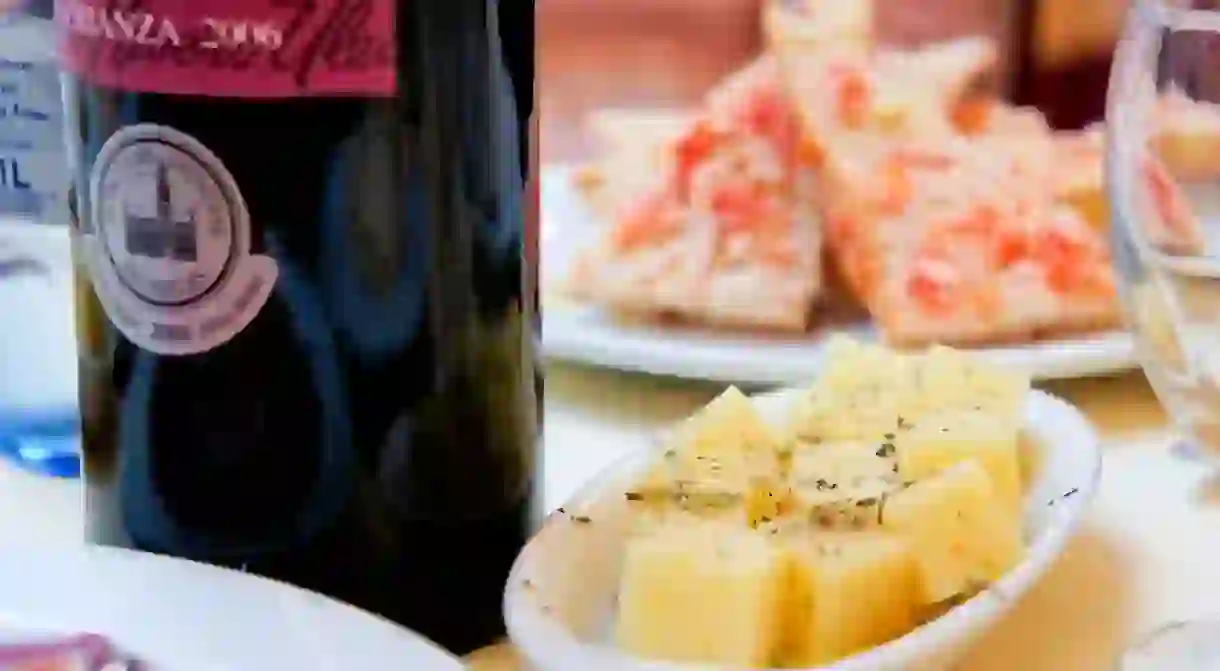A Crash Course In Spanish Cuisine

The gastronomy of Spain is known the world round, whether it’s the carefully crafted paella or the oh-so-naughty patatas bravas. But when it comes to mastering the local cuisine there are a few basic rules you’ll need to obey if you want to cook and eat like a native. Whether it’s adding that pinch of something special or knowing what to order and when, our local’s guide to Spanish cuisine has got it all covered.
Know Your Region
While there are some general truths when it comes to Spanish cuisine, nothing is perhaps more true than the importance of knowing the local gastronomy of the region you’re in. What you eat in Andalusia will be worlds apart from what you might find in the Basque Country or in Catalonia. Spain is a country rich in nature and wildlife, ranging from arid planes to mountains in the Pyrenees, and from the Atlantic Ocean to the Mediterranean. It’s not a surprise then that there is an incredible diversity of ingredients, which is well reflected in the different specialities of each region. Get to know what your region does best and avoid the pitfalls of over-generalizing what are truly varied local delicacies and culinary know-hows.

Are Tapas a Meal?
Tapas – the little portions of food that are either handed out for free when you purchase a drink or purchased for a few euros over the counter at the bar. While it’s true that tapas are perhaps the most popular Spanish culinary exports of all, it’s a fallacy to believe that that’s the only way the Spaniards eat them. In fact, depending on what region you’re in, it may be more or less normal to make a meal of tapas. In Madrid, for instance, you may find that you spend the evening wandering from bar to bar, snacking along the way until you reach satiety. But over in Barcelona, it’s more common to head out for a sit down meal in a restaurant even if you’ve had the odd tapas to start the evening with.

Be Prepared To Share
If you’re eating out in a restaurant, even if it’s not overtly a tapas restaurant, be prepared to share your food with the other diners at your table, in most instances. Many dishes in Spain are served to share, although you will most commonly be asked by the waiter if the food is ‘para compartir‘ – to share – when they take your order. In this case each diner is handed out a plate and the dishes are placed in the middle of the table.
However this isn’t always the case and for instance, when ordering a menú del día – the affordable worker’s meal served in restaurants at lunchtime during the week – each course is generally served as an individual dish.
The Special Ingredients…
When it comes to Spanish cuisine there are a few key ingredients which are at the base of many of the country’s most iconic dishes. What do chorizo, patatas bravas, and Galician-style octopus all have in common? They wouldn’t be what they are if it wasn’t for the key ingredient: smoked paprika – known as pimentón in Spain. This is probably the most important spice in the Spanish cupboard and is used to add depth of flavor and color to a variety of dishes. Most of the country’s smoked paprika comes from the La Vera region of Spain, where there are a number of quality producers exported world-wide. The other most important spice in Spanish cuisine is without a doubt, saffron, the delicate threads of crocus flower which cost more than gold in weight. Saffron adds a delicate but important aroma to some of Spain’s most iconic dishes such as paella, and also used in rich stews, such as the Catalan suquet de peix fish stew.

Get the Timing Right
It’s not just a question of what to eat, but when to eat it. We all know that in Spain things tend to happen a little later, as lunch usually takes place some time between 1pm-3pm, while dinner doesn’t usually happen until at least 9pm. The good news is that there’s an extra little meal in the late morning to see you through until lunchtime – the almuerzo. Usually consisting of a savory snack like a small sandwich, the almuerzo is generally eaten around 11am when breakfast is just about wearing off but it’s too early for lunch yet.

Last But Not Least…Enjoy Yourself
In Spain, eating is not just about feeding yourself, it’s an important part of the day which allows you to take time with friends and family, or simply have a moment’s rest from the chaos of your busy schedule. Take the time to sit down at the table and give the meal the importance it deserves – no rushed sandwich-eating on the park bench. On the weekends, families usually gather for a meal all together, either at home or out in a restaurant, but in both cases it’s always a time for relaxing and enjoying the occasion.













